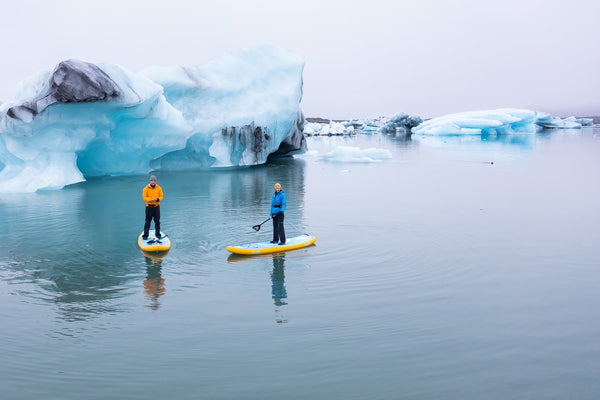
Air Travel with an iSUP
Traveling with your inflatable stand-up paddleboard (iSUP) can add an exciting dimension to your holiday adventures, offering the freedom to explore waterways wherever you go. Whether by plane or car, taking your iSUP along requires some preparation to ensure a smooth and hassle-free journey. Here are comprehensive tips for traveling with your iSUP during the holiday season.
Key Highlights:
- Construction and Durability: iSUPs are built using single, double, or fusion layer methods, impacting their resilience and performance. High-quality iSUPs can last over seven years with frequent use.
- Comparison to Hard Boards: While hard boards have their merits, iSUPs offer advantages in portability, safety, and ease of storage, making them an appealing choice for many paddlers.
- Investment Value: An iSUP offers not just a mode of recreation but a durable asset that brings extended joy and adventure on the water.
- Maintenance Tips: Proper care, including storing the iSUP dry and shielded from UV rays, is crucial for maximizing its lifespan.
- High-Performance Features: Look for iSUPs that incorporate advanced technologies and materials to enhance durability and stability.
Before You Travel
Research and Planning:
- Destination Research: Look into the best paddleboarding spots at your destination. Consider weather conditions, water currents, and any known hazards.
- Regulation and Permits: Some locations require permits or have specific regulations for paddleboarding. Check in advance to avoid surprises.
- Accommodation: If you're staying at a hotel or rental, confirm they can accommodate or provide storage for your iSUP.

Packing Essentials:
- Safety Gear: Always pack a personal flotation device (PFD), a whistle, and, if applicable, a leash. These items are crucial for safety on the water.
- Repair Kit: Include a repair kit for your iSUP. Punctures or leaks can happen, and being prepared can save your trip.
- Waterproof Bag: For storing your phone, keys, and other essentials while on the water.
- Appropriate Clothing: Pack for the water conditions. This might mean a wetsuit for colder waters or UV-protective clothing for sunny destinations.

Packing Your iSUP for Air Travel
- Deflation and Rolling: Ensure your iSUP is fully deflated and rolled tightly. This will help fit it into its bag and leave room for other essentials.
- Protective Wrapping: Consider wrapping your paddle and any fragile items in bubble wrap or clothes for extra protection.
- Baggage Fees: Check if your airline treats sports equipment differently and if there’s a fee. Sometimes, it’s cheaper to rent equipment at your destination than pay high airline fees.

At the Airport
- Early Arrival: Arrive at the airport early. Checking in sports equipment can sometimes take longer, and you’ll want to avoid any rush.
- Documentation: Have a printout or digital copy of the airline’s sports equipment policy handy, in case you need to discuss baggage rules with airline staff.

On the Road
- Securing Your iSUP: If strapping your iSUP to the roof, using a soft rack system can provide extra padding and security for your board.
- Visibility: Ensure your board does not obstruct your vehicle’s license plate or lights. It’s not only a safety concern but a legal requirement in many places.
At Your Destination
- Inflation Spot: Look for a flat, clean area to inflate your board. Avoid rocky or sharp surfaces that could damage your iSUP.
- Local Paddleboard Community: Check if there’s a local paddleboarding group or club. Joining them for a paddle can enhance your experience and provide local insights.
Safety First
- Buddy System: Whenever possible, paddle with a friend. It’s safer and more fun.
- Awareness: Be conscious of your surroundings, including boat traffic, wildlife, and weather conditions.
- Respect Nature: Follow leave-no-trace principles. Pack out what you pack in, and be mindful of the environment.

Enhancing Your Paddleboarding Experience
- Photography: Consider a waterproof camera or a waterproof case for your phone to capture your adventures without risking water damage.
- Fitness and Yoga: iSUPs offer a stable platform for yoga and fitness routines. Explore videos or classes before your trip to incorporate these activities into your paddleboarding experience.
Traveling with your iSUP allows you to explore and appreciate the beauty of different waterways around the world. With the right preparation and mindset, you can make the most out of your paddleboarding adventures, creating unforgettable memories on the water.
Related Topics
Improving Fitness on Paddle Board
How Inflatable Paddle Board Technology Changed The SUP Industry
Your Comprehensive Guide to Inflatable Stand Up Paddle Boards


